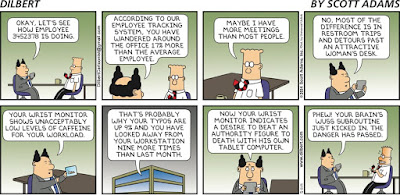Adam Markowitz and Ryan Craig have proclaimed 2016 as the
Year Of The Quantified Student. For context, Markowitz is the Founder and CEO of
Portfolium and Craig a Managing Director at
University Ventures. Here are two quotes:
Quantified Students will be able to map current skillsets against the requirements of target careers, evaluate the gap, and then select the educational program or path that gets them to their destination quickly and cost effectively.
As Quantified Students declare majors and continue to accrue skills, four years of academic work will find a permanent home in the cloud rather than in the trash. All of the underlying data will be indexed and eventually cashed in by students to prove competencies to skills-hungry employers.
Not surprisingly, Markowitz and Craig propose/promote
e-portfolios for that 'permanent' home in the cloud - in some ways a logical extension of
Claim Your Domain! and adaptive-learning tools like
Knewton.
Of course, why would a Quantified Student spend 4-year on the campus of a small public college as opposed to filling the skill gaps identified by Big Data on the vast international private market of higher education? For a more nuanced discussion, consider
From the Quantified Student to the Quantified Self by Audrey Watters.
 |
| http://dilbert.com/strip/2014-05-11 |

